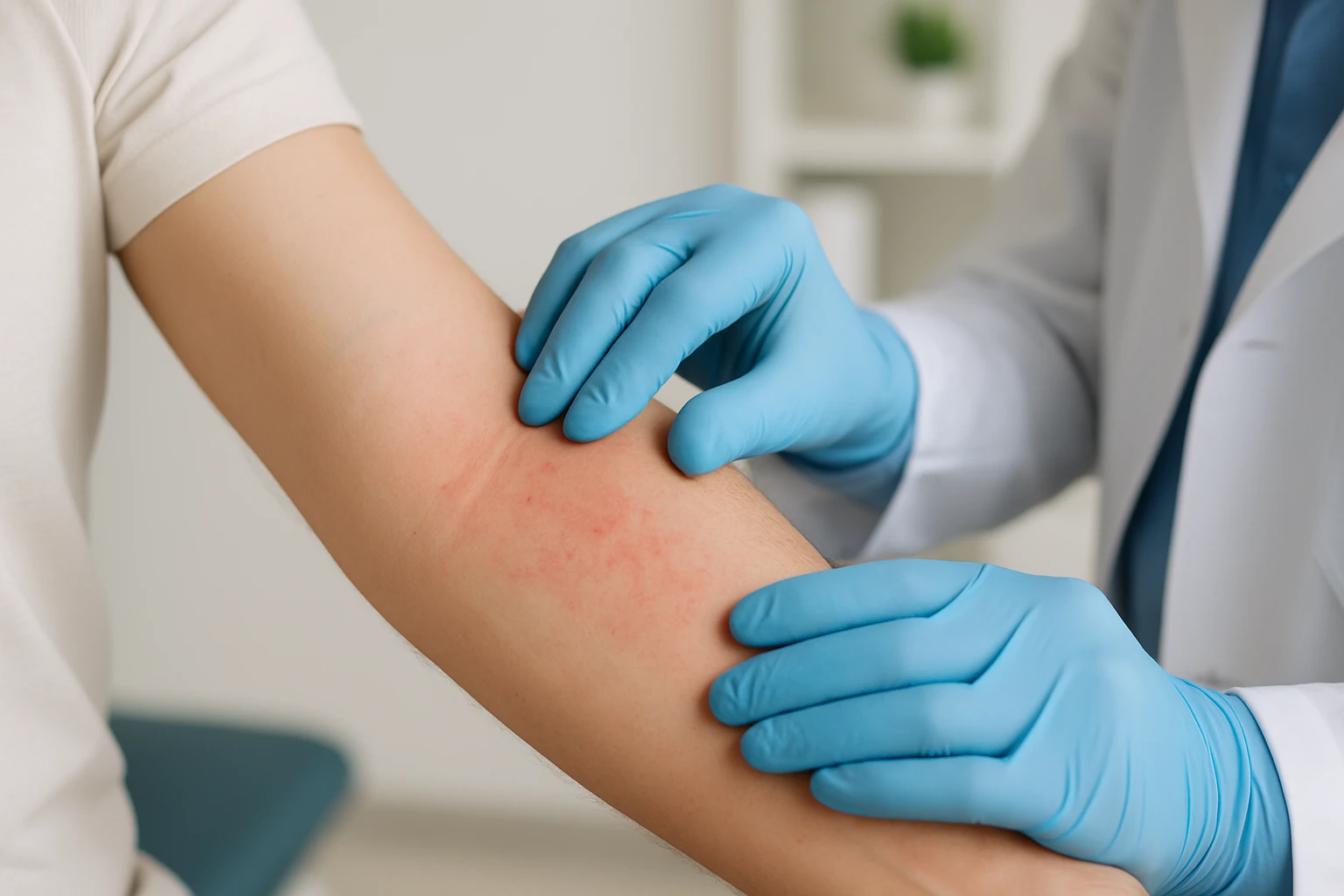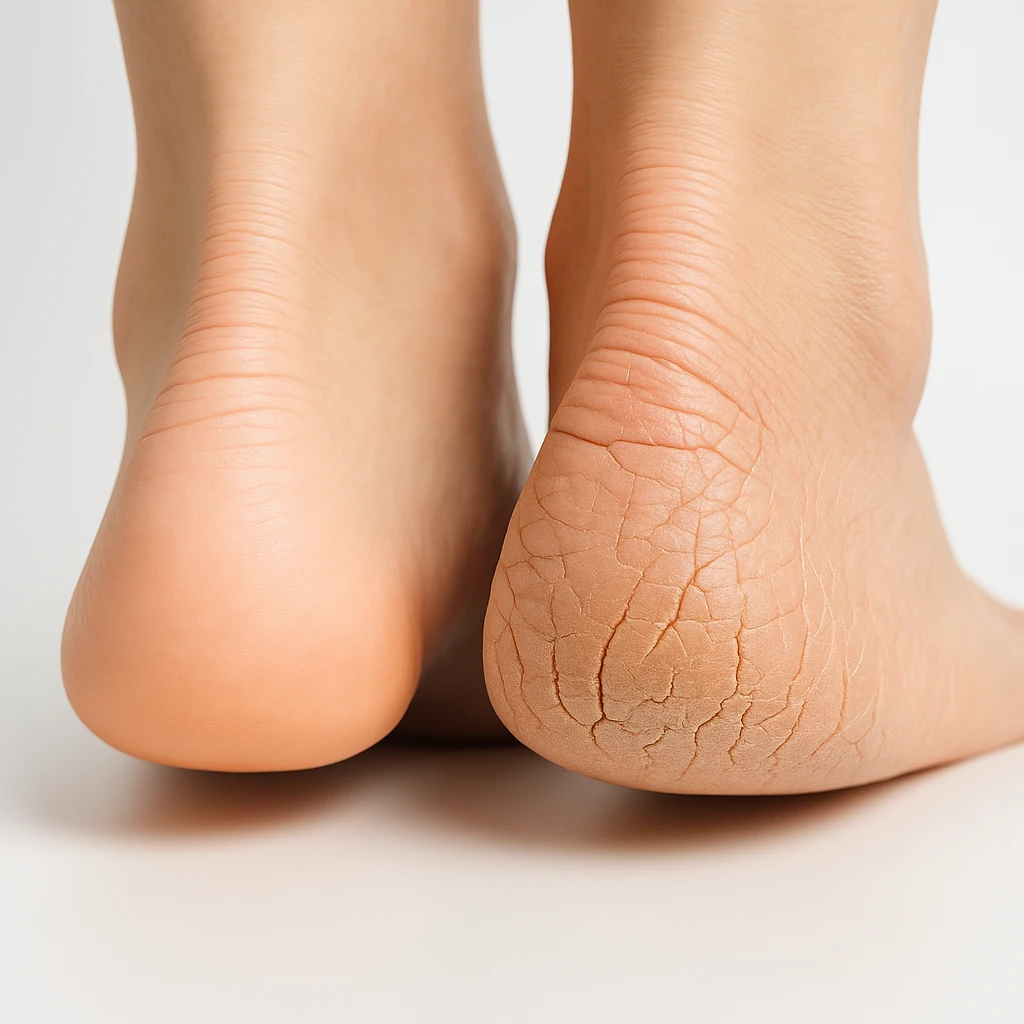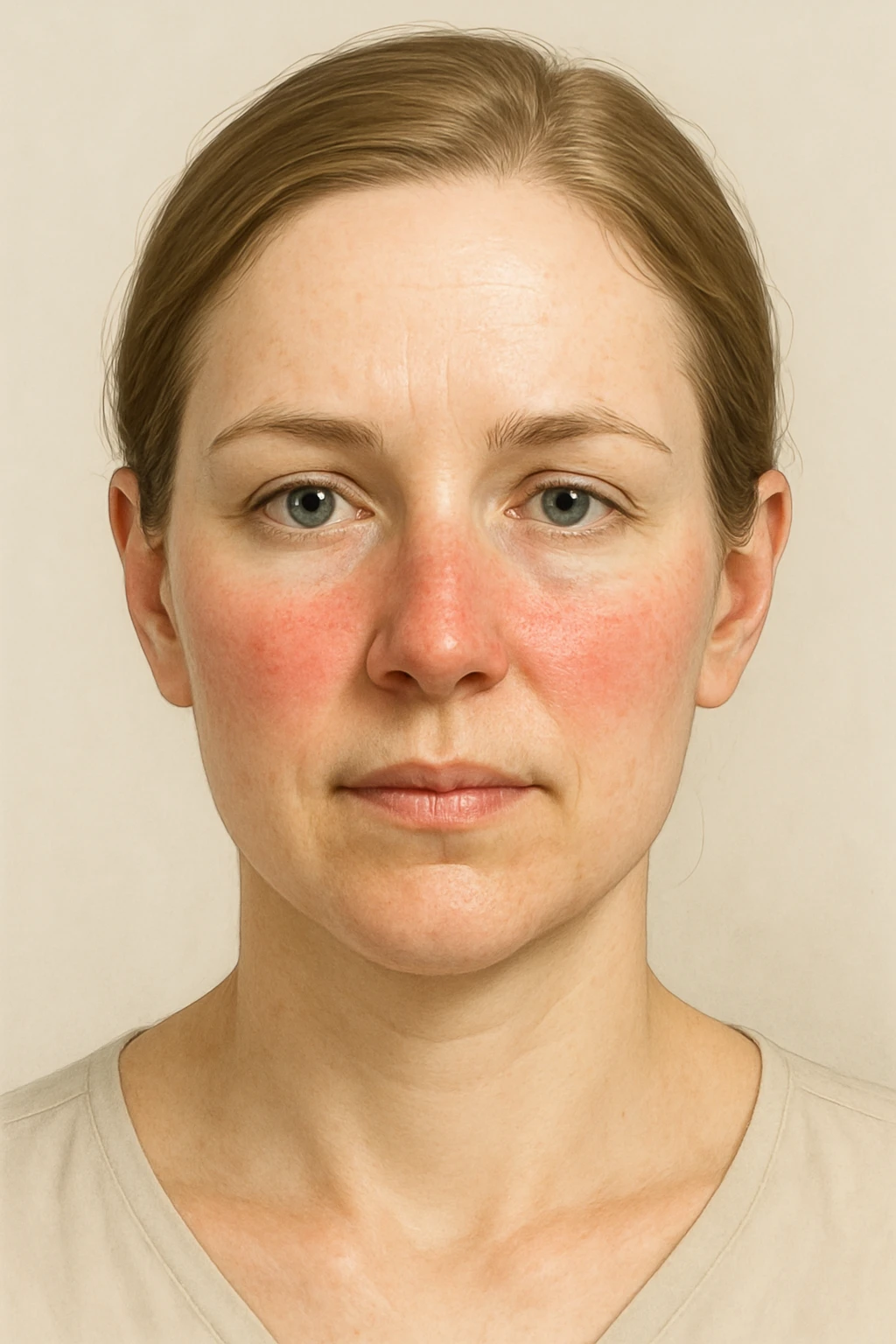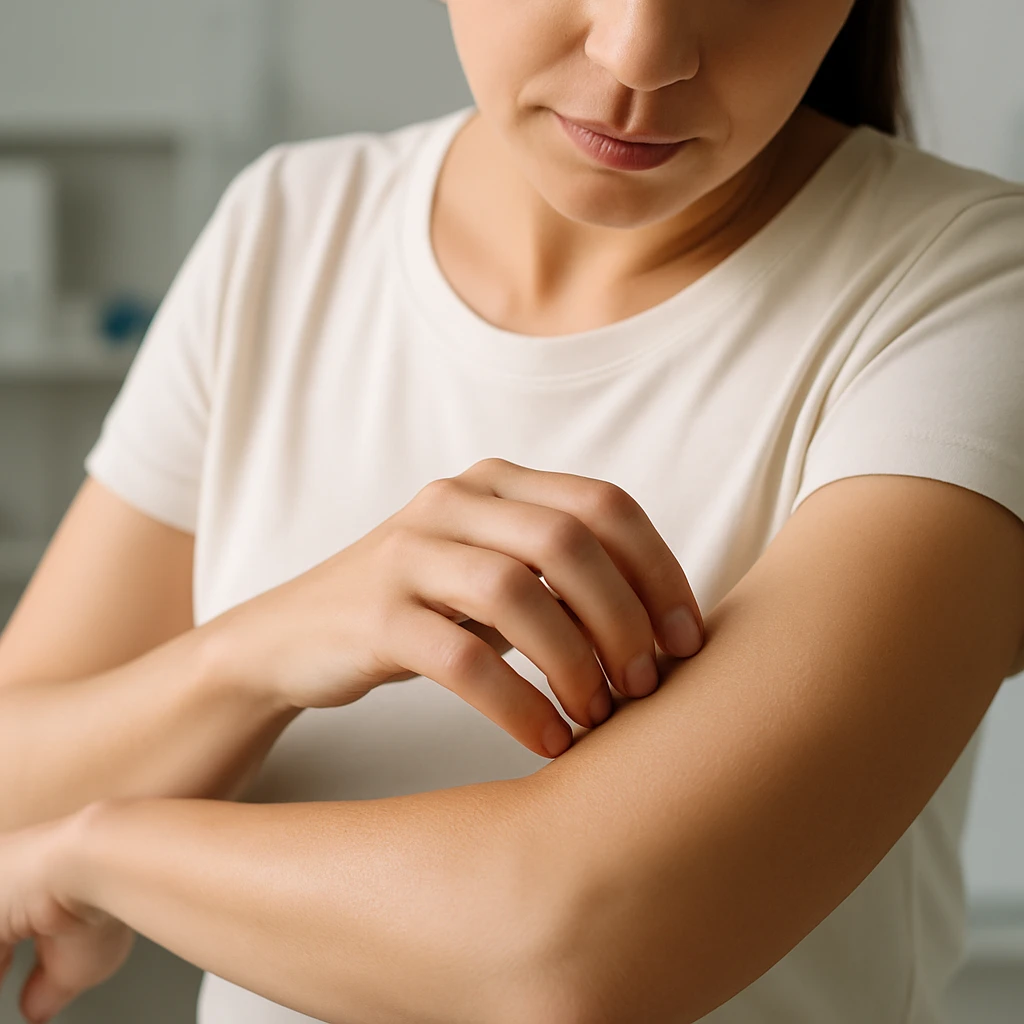Rash on Arms: Common Triggers and Skin Care Tips
Rash on Arms: Overview
A rash on the arms is a common skin concern affecting both children and adults. It may appear suddenly or develop gradually, showing up as redness, itching, bumps, or dry, flaky patches. Most arm rashes are harmless and often result from contact with irritants, allergic reactions, infections, or chronic skin conditions such as eczema or psoriasis. Because the arms are frequently exposed to soaps, fabrics, and environmental triggers, they are especially prone to irritation. Identifying the cause of a rash is essential for choosing the right care, whether through home remedies or medical treatment. This article explains the causes, symptoms, and effective ways to manage and prevent a rash on the arms.
Common Causes of a Rash on the Arms
A rash on the arms can occur for many reasons, ranging from mild irritation to chronic skin disease. Most cases develop when the skin becomes inflamed after contact with an external substance or due to internal sensitivity.
Main Causes
- Contact dermatitis: Occurs when the skin touches an allergen or irritant such as detergents, fragrances, jewelry metals, or plants. It can cause itching, burning, or swelling soon after exposure.
- Allergic reactions: Triggered when the immune system overreacts to substances like certain lotions, latex, or fabric dyes. These reactions may cause redness or raised bumps that sometimes spread.
- Infections and chronic skin conditions: Viral, bacterial, or fungal infections can inflame the skin. Chronic issues such as eczema or psoriasis often cause dryness, flaking, and recurring irritation.
- Environmental and genetic factors: Harsh weather, frequent washing, or strong cleaning agents can weaken the skin’s barrier. A family history of sensitive skin or eczema can increase susceptibility.
Recognizing these causes helps guide prevention and care. Avoiding triggers, moisturizing regularly, and protecting the skin from harsh conditions can reduce irritation and support overall skin health.
Symptoms and Diagnosis
Recognizing the Symptoms
The appearance and feel of an arm rash can vary, but several common signs help identify it. Most rashes start as redness or irritation and may be accompanied by itching, swelling, or dryness. Some rashes form small bumps, blisters, or crusting patches, while others cause flaking or thickened skin over time.
- Visible signs: Redness, bumps, blisters, flaking, or crusting
- Sensations: Itching, burning, tightness, or mild pain
- Frequent locations: Forearms, hands, or areas in direct contact with irritants
Severe rashes may ooze, crack, or become painful, especially when scratched. Persistent or worsening symptoms should be evaluated by a healthcare provider.
How Doctors Diagnose a Rash on the Arms
Healthcare providers identify the cause through a physical examination and a review of symptoms and recent exposures. They look for patterns such as whether the rash appears on one or both arms and consider possible irritants like new soaps or fabrics.
When the cause is unclear, additional diagnostic tools may be used, including:
- Patch testing: Detects allergic reactions to specific substances.
- Skin examination and history review: Helps identify allergic or irritant causes.
- Further testing: Conducted if infection or systemic illness is suspected.
A clear diagnosis helps ensure the right treatment plan and reduces the risk of recurrence.
Treatment Options for a Rash on the Arms
Treatment depends on the severity and cause of the rash. Most mild cases respond well to simple self-care, while more serious or persistent rashes may require medical attention.
Self-Care at Home
- Avoid triggers: Stay away from soaps, detergents, or materials known to irritate the skin.
- Moisturize regularly: Apply a fragrance-free, gentle moisturizer several times daily to relieve dryness and protect the skin barrier.
- Use cool compresses: A damp, cool cloth can reduce itching, redness, and swelling.
These basic steps often help calm irritation and prevent further inflammation.
Over-the-Counter Treatments
- Topical corticosteroids: Reduce redness, swelling, and irritation.
- Antihistamines: Help relieve itching, especially from allergic reactions.
Use these treatments as directed and avoid prolonged use without medical advice.
When to See a Healthcare Provider
If the rash worsens or fails to improve, professional care may be needed. A healthcare provider may prescribe:
- Prescription creams: Stronger topical treatments to control inflammation.
- Oral medications: Used for severe dermatitis or suspected infections.
Professional evaluation ensures the proper diagnosis and care, helping prevent recurrence and complications.
Preventing a Rash on the Arms and Protecting Skin Health
Preventing a rash on the arms begins with consistent skin care and minimizing exposure to common irritants. Strengthening the skin barrier and reducing contact with triggering substances can help prevent flare-ups and maintain long-term comfort.
Key Prevention Steps
- Identify and avoid irritants: Common triggers include certain soaps, detergents, and plants that may dry or inflame the skin. Wearing gloves or protective clothing when using cleaning products or gardening can help prevent direct contact.
- Choose gentle products: Use fragrance-free, hypoallergenic lotions and cleansers. Harsh additives or fragrances can strip moisture from the skin and cause irritation.
- Moisturize regularly: Apply a gentle moisturizer immediately after bathing to lock in moisture and reinforce the skin barrier.
Daily Skin Protection Tips
- Use mild, non-drying cleansers to preserve the skin’s natural oils.
- Stay hydrated to support skin elasticity and overall function.
- Protect arms from harsh weather by wearing long sleeves or applying barrier creams when needed.
With consistent care and attention to daily habits, most people can significantly reduce the occurrence of a rash on the arms. Gentle, non-irritating products and proper hydration are simple but powerful ways to maintain healthy, resilient skin.
When to Seek Medical Help for a Rash on the Arms
Most arm rashes are mild and clear up with simple care, but some require professional evaluation. Recognizing when to seek medical help ensures proper treatment and prevents complications.
When to Contact a Healthcare Provider
- The rash spreads rapidly or becomes increasingly painful.
- There are signs of infection, such as swelling, warmth, pus, or fever.
- The rash does not improve with self-care after several days.
- Redness, itching, or scaling persist despite avoiding triggers and moisturizing.
These symptoms may indicate that the rash extends beyond surface irritation. A healthcare provider can evaluate the underlying cause and determine whether antibiotics, prescription creams, or other treatments are needed.
Care Tips for Families
- Encourage gentle washing with mild, fragrance-free soaps.
- Apply moisturizers regularly to keep the skin hydrated.
- Dress in soft, breathable fabrics to minimize irritation.
- Be aware of new products or environmental exposures that could trigger a rash.
Most rashes on the arms can be managed effectively with early attention and proper care. Seeking medical advice when symptoms worsen or persist helps ensure safe healing and peace of mind for the whole family.
Frequently Asked Questions About Rash on Arms
Can a rash on the arms be contagious?
Most rashes on the arms are not contagious. However, if caused by a viral, bacterial, or fungal infection, it may spread through direct contact or shared items. A healthcare provider can confirm whether precautions are needed.
How long does it take for an arm rash to heal?
Mild arm rashes often improve within a few days of avoiding triggers and using moisturizers or cool compresses. If symptoms persist beyond a week or worsen, medical treatment may be required.
What helps relieve itching from a rash on the arms?
Keeping the skin cool and hydrated can ease itching. Over-the-counter antihistamines or topical creams may also help, but it’s important to follow usage directions and consult a doctor if irritation continues.
Should I cover a rash on my arms or let it breathe?
Most mild rashes heal better when exposed to air, as covering them tightly can trap moisture and cause irritation. If the area may rub against clothing or get dirty, use a loose, breathable covering.
Can stress cause or worsen a rash on the arms?
Stress doesn’t directly cause rashes, but it can worsen existing skin conditions such as eczema or psoriasis. Managing stress through rest, hydration, and healthy routines supports overall skin recovery.
When should I see a doctor for a rash on my arms?
Seek medical care if the rash spreads rapidly, becomes painful, or shows signs of infection like pus or fever. A persistent rash that doesn’t improve with home care also needs evaluation.
How can I prevent rashes from coming back?
Use gentle, fragrance-free skin care products and moisturize daily to protect the skin barrier. Wearing protective clothing and avoiding known irritants can also reduce flare-ups.













